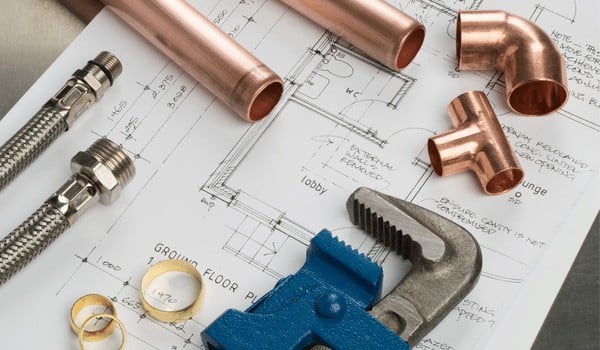Noticed a puddle under your kitchen sink? 😰
A leaking under-sink water filter isn’t just annoying — it can quietly damage cabinets, flooring, and even drywall if it goes unchecked.
The quick answer:
- ✅ Most leaks are easy to fix yourself — usually loose fittings, worn-out O-rings, or clogged cartridges causing pressure buildup.
- ✅ Start by turning off the water, checking each connection point, and inspecting the filter housing for cracks or worn parts.
- ✅ In many cases, replacing a gasket or re-tightening the housing solves the problem in minutes.
Let’s walk through what causes leaks, how to fix them step-by-step, and how to stop them from happening again. 🚿
🛠️ Why They Leak

Leaks in under-sink water filters usually aren’t random — they almost always trace back to one of a few common culprits. Here’s a quick look at what typically goes wrong: 👇
- 🔩 Loose Connections: Fittings, tubes, and adapters can shift over time, especially if you store cleaning supplies under the sink and bump into them.
- 🧰 Worn-Out O-Rings: The rubber gasket that seals your filter housing can flatten, crack, or get debris caught underneath, breaking the watertight seal.
- 🛠️ Housing Not Tightened Properly: If you recently changed the filter and didn’t tighten the housing enough, even a small gap can cause steady leaks.
- ⚙️ Wrong-Sized Adapter: If the fitting connecting your cold water line to the filter isn’t an exact match, no amount of Teflon tape will fully seal the connection.
- 🚿 Clogged Filters Raising Pressure: When a filter clogs, water pressure inside the system spikes — leading to stress cracks, O-ring failure, or even bursting storage tanks in RO systems.
💬 Good To Know:
If you just installed new filters or made plumbing adjustments recently, that’s often where the leak started. It’s usually not a coincidence!
🛠️ How to Troubleshoot

When your undersink filter starts dripping, the first step isn’t grabbing a wrench — it’s detective work. 🔍
Here’s how to quickly narrow down the problem without ripping your entire setup apart:
- Start at the source: With the water turned on, trace the flow starting at the water inlet and work your way to the faucet. Look for visible drips, damp connections, or pooling water.
- Check fittings and hoses: Bumped or loosened tubes are often culprits, especially if you store cleaning supplies under the sink.
- Inspect hidden parts: If you don’t spot anything obvious, it’s time to check inside — housings, O-rings, and cartridges can all be problem points.
💬 Pro Tip: Even slow leaks can cause serious damage if ignored. If you see moisture but can’t find an active drip, dry everything off and check back after an hour. Slow leaks often reveal themselves with a little patience.
🔧 How to Fix

Once you track down the leak source, fixing it usually isn’t complicated — but doing it methodically can save a lot of frustration. 🧰
Here’s the game plan:
- Gather your supplies: Have a filter wrench, new cartridges, fresh O-rings, silicone lubricant, towels, and a bucket ready.
- Depressurize the system: Shut off the water supply, open the faucet, and press any pressure release buttons to drain remaining water.
- Inspect filter housings: Use the wrench to open the sumps. Look for cracks in the plastic housing and check the caps carefully.
- Check and replace O-rings: A flat, brittle, or dirty O-ring won’t seal properly. Clean the track, apply silicone lubricant, and install a fresh ring if needed.
- Replace or reseat the filter cartridge: A clogged or poorly seated cartridge can cause leaks. Make sure replacements fit snugly but don’t overtighten the housing.
- Test for leaks: Turn the system back on and watch closely for any drips. Flush the system if recommended by your manufacturer before drinking.
💬 Helpful Tip: Always use silicone-based lubricant on O-rings — never petroleum jelly. It preserves the rubber and maintains a tight seal without damaging the plastic parts inside your filter system.due from the repair process.
🌫️ Leak or Just Condensation? How To Tell
Not every puddle under your sink means disaster. Sometimes, what looks like a leak is just normal condensation. Here’s how to spot the difference:
- Leaks: Water keeps dripping from a specific spot (connector, housing, valve) even after you dry everything.
- Condensation: Moisture beads up evenly across pipes or filter housings, especially on hot, humid days.
💧 Quick Test: Dry off the pipes, tank, and filter housing completely with a towel. Wait about 30 minutes.
- If you see a localized drip reappear — it’s likely a leak.
- If it just feels damp all over again — it’s probably harmless condensation.
💬 Helpful Tip: A moisture alarm placed under your sink can alert you early to real leaks — before they cause serious damage.
🛡️ How to Prevent Filter Leaks

A little maintenance goes a long way toward avoiding leaks (and expensive repairs). Here’s how to keep your under-sink system running smooth:
- Stay on Top of Filter Changes: Old or clogged filters are the #1 preventable cause of leaks. Swap them out on schedule using high-quality, NSF-certified cartridges.
- Use Caution with Storage: Avoid bumping hoses or fittings by keeping bulky items (like cleaning supplies) away from your filter system.
- Avoid Corrosive Chemicals: Leaks sometimes start after a small chemical spill (like drain cleaner) eats away at connectors. Store chemicals in a separate cabinet if you can.
- Install a Moisture Alarm: A battery-powered water sensor costs less than $20 and sounds the alarm at the first sign of a leak — giving you time to act fast.
💬 Pro Tip: A simple monthly check under your sink can catch tiny issues before they turn into bigger problems. It only takes two minutes — but can save you a fortune in repairs!
💭 Final Thoughts: Don’t Let a Small Leak Become a Big Problem
Leaks under your sink might start small — but left unchecked, they can cause real headaches (and even costly damage).
The good news?
With a few simple habits — like regular filter changes, a quick monthly check, and using a moisture alarm — you can keep your undersink water filter running cleanly and reliably for years to come.
And if your system is outdated or leaking more often than it should?
Sometimes it’s smarter (and cheaper long-term) to upgrade. Check out our top-rated undersink water filters if you’re ready for a fresh start. 💧
Protect your home, protect your water — and get back to trusting every sip.
 104 people found this helpful. Was this guide helpful to you?
104 people found this helpful. Was this guide helpful to you? 

